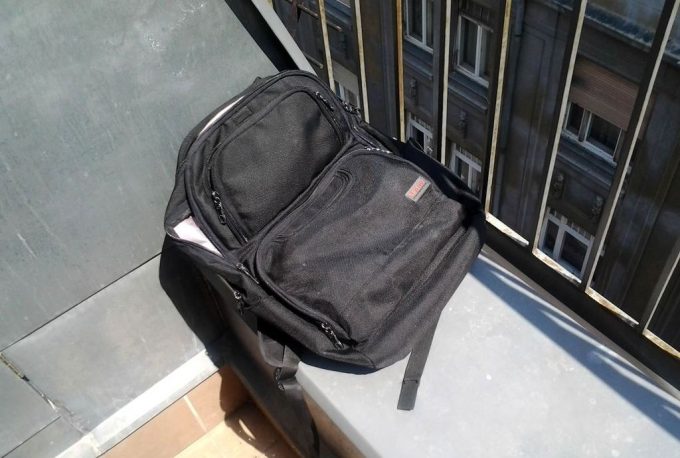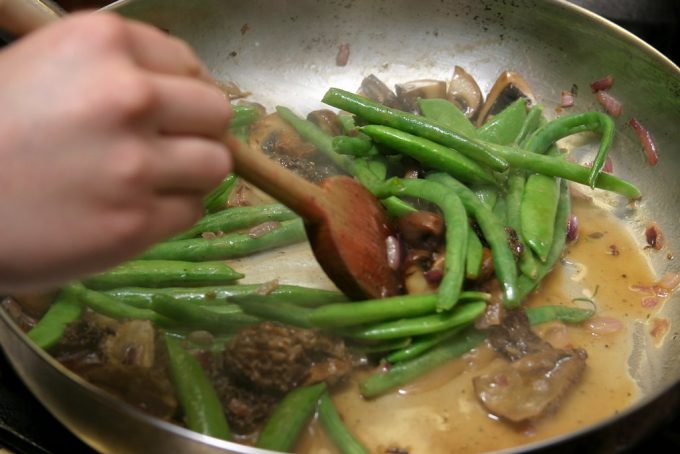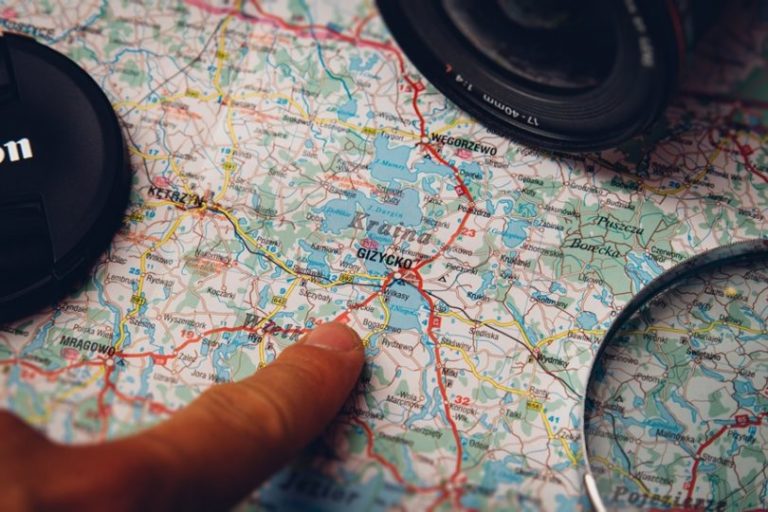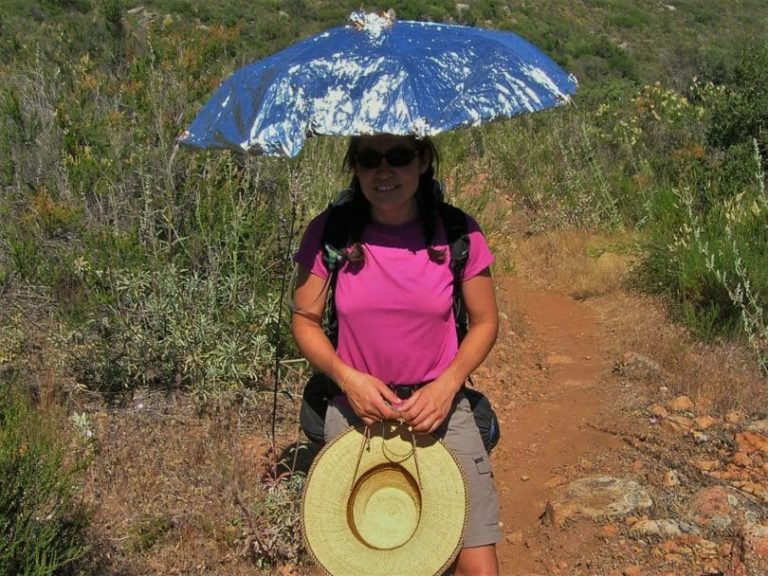Vegan Backpacking Food: Backpack Like a Pro
Fresh air can definitely work up an appetite and make you crave sugary foods, right? On top of that, most of the people have prejudice when it comes to vegan backpacking food – if you think vegan foods taste bland and won’t keep you full, you could be wrong!
Actually, learning a few things about vegan meals you can take with you on the trail might come in handy for keeping your energy levels high enough during the trek and for making you feel full for longer periods of time. Apart from that, vegan foods can also be delicious and healthy at the same time.
No matter whether you’re a vegan or just someone who’s looking to add some variety to your meals, in this article you will find useful tips on how to prepare before the trip and what food to take with you. In addition, we will share our favorite recipes that are super delicious and easy to make.
Planning The Trip at Home
In order for every trip to be successful, you need to spend some time at home, planning. This is really a must when backpacking, especially if you aspire to carry ultra-light load on the road.
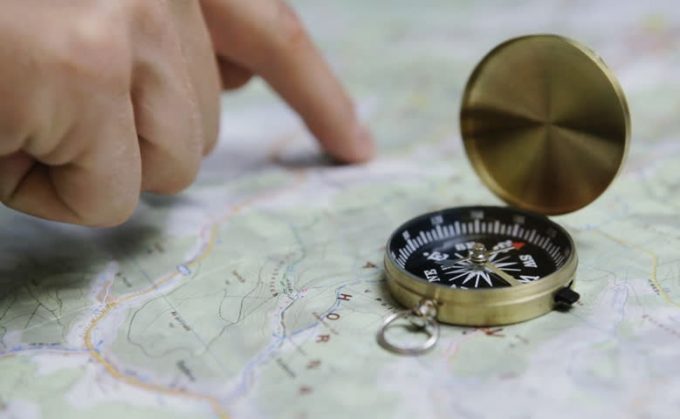
When Food Quantity is as Important as Its Quality
Start off with planning how many days you want to spend backpacking. Then, accordingly, you have to plan how many meals you are going to have. Remember, you are going to burn a lot of calories, so it is vital that you don’t skip any meal.
It is also wise to actually count the calories to make sure that no one will fall victim to hunger during the trip. In addition, it is always a good idea to take some extra food in case of an emergency, especially if you’re planning to go on a longer backpacking adventure.
Cookware and Other Necessary Cooking Tools
The cooking tools are those that make or break the meal when backpacking. We can agree that food is totally necessary, but it is nothing without the proper cookware, especially when you don’t have an access to all of the necessary tools. So, make sure to properly plan for all of the tools and make sure that you will be able to cook all of the vegetarian backpacking meals once you are out on the trail.
For that purpose, we created a list of all of the basic tools you will need for preparing the recipes we have chosen for you. Have in mind that all of the recipes can be cooked over a campfire, on a grill grate, in an iron skillet or in a Dutch oven. So, bear with us throughout the list and start packing.
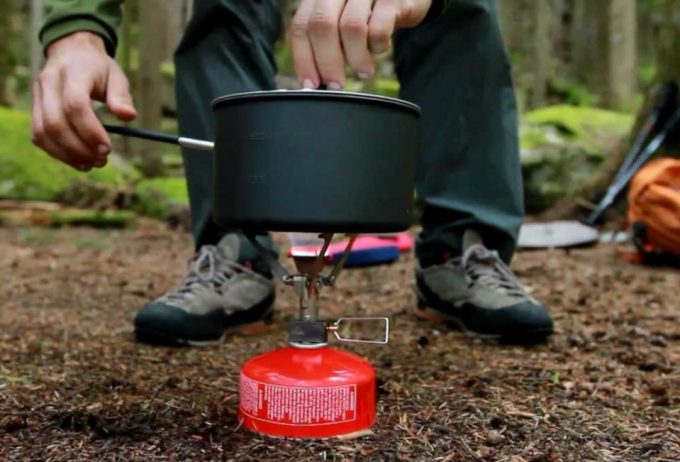
- Cook sets – these are already assembled sets of pans, pots and lids. They are a better choice than individual pieces because they save you from the pain of making combinations and there are already customized sets in the stores for backpacking in terms of size, weight and durabilit
- Mugs and bowls – They are sometimes included in the cook set, but if they’re not, make sure you bring them with you. Since they can take up a lot of space, you can have plastic ones with you that you can dispose later on and free some space.
- Utensils – While we don’t mind taking the traditional kitchen utensils, you may find it more convenient to bring the spork, which is a spoon, a fork and a knife combined into one. Whichever you choose make sure you bring just the necessary amount of them.
- Extras – Depending on your preferences, you might want to bring a lot of plastic bags, French press for the coffee, extension forks, cutting board, towels, or anything else that comes in mind.
Stevia, Spice and Everything Nice
…these are the ingredients chosen by vegans to add flavor to the simple meals. Though we don’t consider spices as an actual cooking tool, it’s good to take your favorite ones to make your meals feel a bit homier. No meal is good without the salt and pepper, nor the tea in the chilly nights is good without its cinnamon scent. You will thank us later for the last one.
Food Diversity
Being a vegan doesn’t mean that you have less food choices to make and consequently, less planning to do. True, you are relieved from choosing whether you’d like to have pork or beef steak for lunch, but choosing between vegan shakshuka and zucchini soup is equally hard. Luckily, vegan food is backpacking friendly and in addition we will list an array of possible meals that you can take with you.
Dehydrated Vegan Food
As you have probably figured out by now, you have to take a lot of food, which translates into carrying a heavier load on your back. Fortunately, there is a solution for that and it is called food dehydrator. It’s a common tool to possess nowadays if you are backpacking on a regular basis and it is cheaper to have it at home on the long-run than having to buy dehydrated food from the stores.
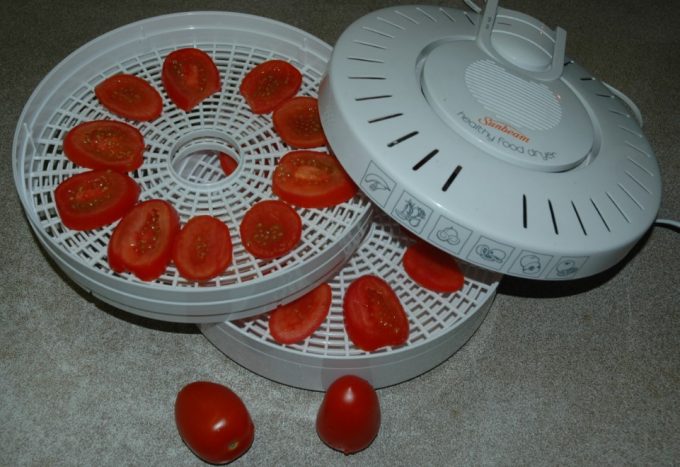
Also, it is way healthier because all of the mass producers saturate their products with artificial colors, preservatives and chemicals. You can dehydrate anything you’d like and since home-dried food takes up to half of the store-bought dried food, or the fresh one for that matter, you will save space in the backpack.
Fresh Vegan Food
Just because dehydrated food takes up less space, it doesn’t mean you shouldn’t bring fresh veggies and fruit. It is a bit more difficult to take them on the trail, because they weigh more and are bulkier, but they will keep you healthier on the road.
So, if you decide to opt for fresh food, regardless of how much it causes ‘problems’, make sure it can withstand under different conditions. Our favorites are apples, carrots and bell peppers.
Seeds and Nuts
These snacks are one of the most caloric snacks you can get on the road and you cannot even think of leaving your house without them. Whether raw, or roasted, they will always boost your body with healthy fats, proteins and fiber. You can easily make a mix of pumpkin seeds, sunflower seeds, almonds, cashews and hazelnuts at home, or just buy it from the store.
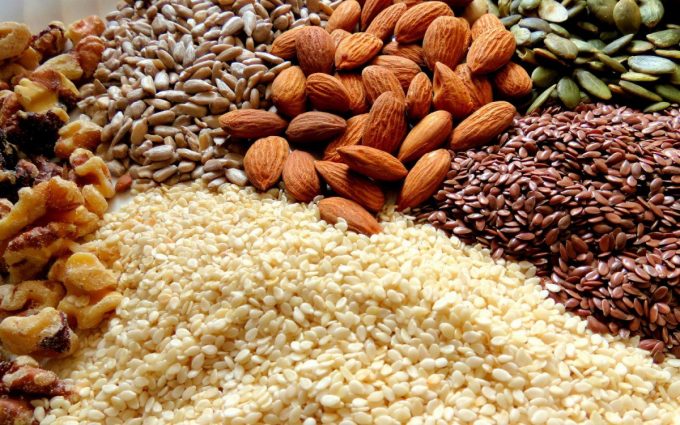
If you are more ambitious, you can even add a handful of dried cranberries, strawberries, raspberries… all of the berries, actually. They are great antioxidants and once mixed with the nuts, they are a great energy bomb.
Instant Noodles, Pasta, Quinoa, Chia and Couscous
These instant goodies are our favorites. They require just a pot, a boiling water and a small fracture of your time and attention. Also, they can be easily complemented with dried veggies, such as tomatoes, peas, zucchinis in addition to the soy sauce and the variety of spices you’ve packed earlier.
Also, there are a lot of vegan varieties of mac & cheese and those are the best comfort food that you can get on the road. There is one disadvantage though; they are not really calorie-dense, but they will work just fine as a dinner. Plus, you have the nuts to offset that shortage.
Bread and Wraps
We recommend ‘whole grain everything’. Whole wheat bread and wraps are healthier and probably a must for a backpacking trip, because it will make you feel full for longer time.
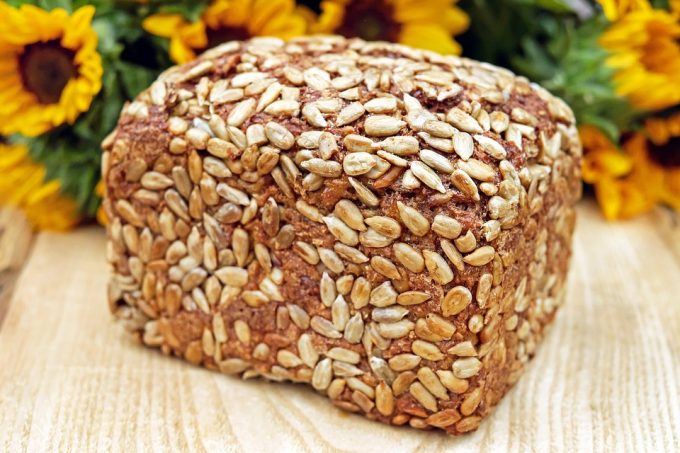
You can deep them in hummus, homemade dips and nut butters, or you can make vegan grilled cheese and vegan wraps, loaded with hummus, avocado spread, dried tomatoes and peas.
Nut Butters
Nut butters may count as nuts, but they have a special place in our hearts and therefore they deserve to be mentioned separately. And when we say nut butters, we’re thinking peanut and almond butter. Obviously, our favorites. They go great in combination with bread and wraps; with dried fruits and veggies; topped with some more of that seed-nut mixture, because why not.
Hummus and Homemade Spreads
It’s alright if you prefer to make your hummus at home, but nowadays you can find dehydrated hummus at the stores that is equally good as the homemade one. You just need to add some water to restore it to the initial state, add a bit of oil and spices for flavor – et voilà!
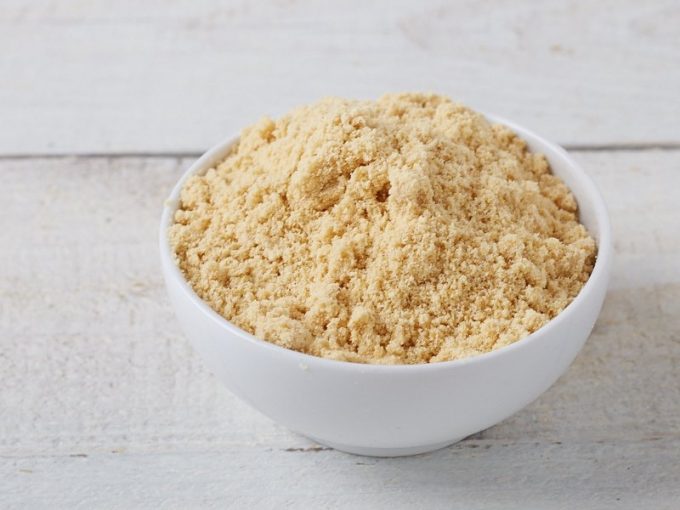
Also, we love the homemade avocado spread which goes perfectly with the whole wheat tortillas or whicheer snack you decide to take on the go.
Recipes
This last section of the article is dedicated for the part that probably most of you have been impatiently waiting on – them recipes.
We are aware that most of you already have backpacking experience and can come up with meal combinations from the foods we mentioned above earlier, but we wanted to go a bit further and select few recipes that we really like. So, without further ado, take a look at our ideas and feel free to prepare them on your next trip.
Breakfast
They say breakfast is the most important meal of the day and we agree. There ain’t no better way to start your day than with millet and berries combo.
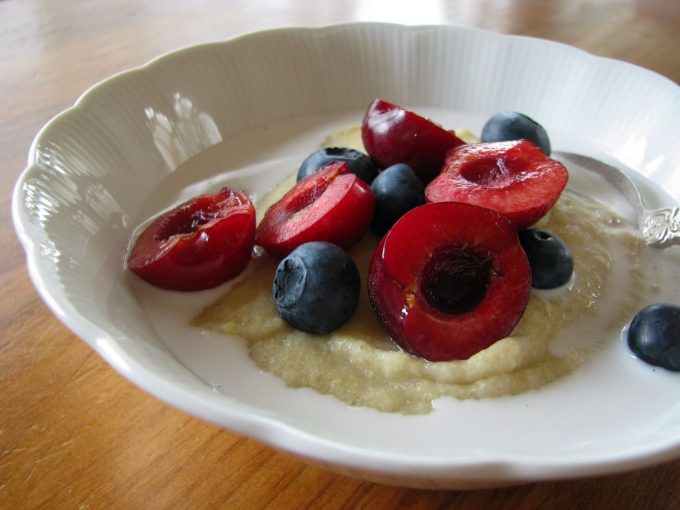
#1. Millet porridge with coconut and berries
Servings: 1
Cooking time: 5 min
Cooking tool: one pot; a mug
Calories: 200-300
Ingredients: ¼ cup millet flakes
2 tablespoons coconut milk powder
1 teaspoon Stevia
Handful of berries by choice
At home: Mix all of the ingredients into a zip lock bag.
On the trail: Bring ½ cup of water to boil and carefully mix it with the dry ingredients.
Stir well and let it sit for 4-5 min.
Starter
Maybe you were thinking of skipping the starter while on the trail, but this soup is too good to be left out of the menu.
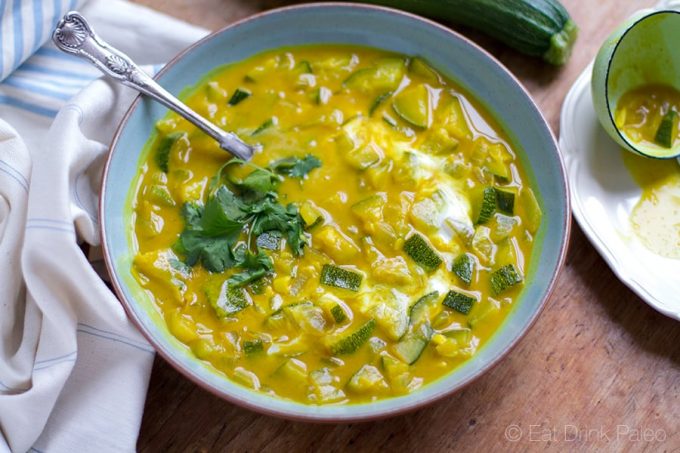
#1. Courgette soup with curry
Servings: 1
Cooking time: 10 min
Cooking tool: one pot; a mug
Calories: 200-250
Ingredients: ¼ cup dehydrated courgettes
2 tablespoons powdered coconut milk
1 teaspoon curry powder
Salt and pepper
At home: Mix all of the ingredients into a zip lock bag.
On the trail: Pour the soup mix into a mug.
Bring 1 cup of water to boil and then gradually add to the soup mix while stirring.
Let it sit for 5 min.
Lunch
Now, it’s already lunch time. This will probably be the most caloric meal you will have on the road and we thought that sharing two lunch ideas is the right thing to do. Also, we find both of the meals too delicious and we can’t choose between the two of them.
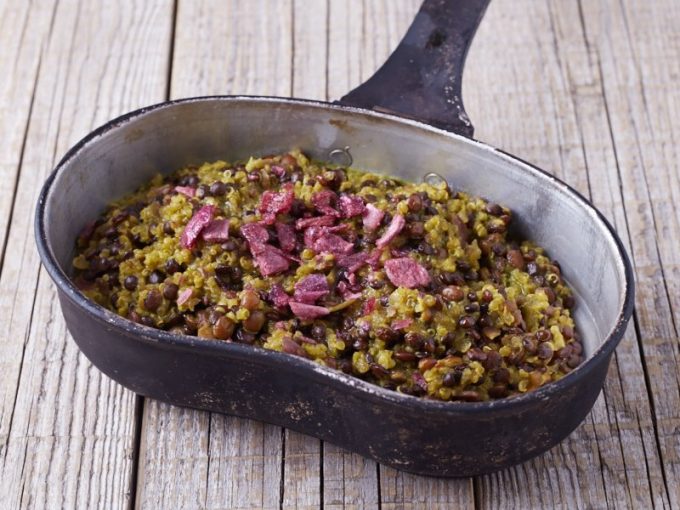
#1. Quinoa, lentils and kale casserole
Servings: 1
Cooking time: 15 min
Cooking tool: one pot
Calories: 450-500
Ingredients: ¼ cup dehydrated cooked quinoa
¼ cup dehydrated cooked black lentils
2 tablespoons powdered coconut milk
1 teaspoon kale powder
1 teaspoon mild curry powder
¼ cup bouillon cube
Handful of dehydrated caramelized onions
Salt and pepper
At home: Mix all of the ingredients into a zip lock bag.
On the trail: Put the meal mix into a pot together with 1 cup of water.
Bring the pot to boil and cook for 10 min until rehydrated.
Stir occasionally.
#2. Spicy Bulgur
Servings: 1
Cooking time: 20 min
Cooking tool: one pot
Calories: 450-500
Ingredients: ½ cup red bell pepper, chopped
½ cup red onion, chopped
½ cup canned tomatoes, diced
1 teaspoon olive oil
1 teaspoon chili powder
¼ cup instant bulgur
¼ cup canned beans, drained
Salt and pepper to taste
At home: Heat the olive oil in over a medium heat and then add the onions.
Add the bell peppers, the instant bulgur and the chili.
Cook together for 1-2 min.
Gradually pour in the ½ cup water and diced tomatoes; bring it to boil while stirring.
Add the beans and simmer for 10 more min until the water is absorbed.
Season it and remove it from the heat; let it cool down on a room temperature.
After it’s cooled down dehydrate it for 8-10 hours and then pack it in a zip-lock bag.
On the trail: Put the dehydrated meal into a pot together with 1 cup of water.
Bring the pot to boil and cook for additional 5-10 min until rehydrated.
Stir occasionally, remove it from the heat and then let it sit for 5 more min.
Snack
It’s time for one last fling before the dinner. You can never do wrong with energy balls like these ones.
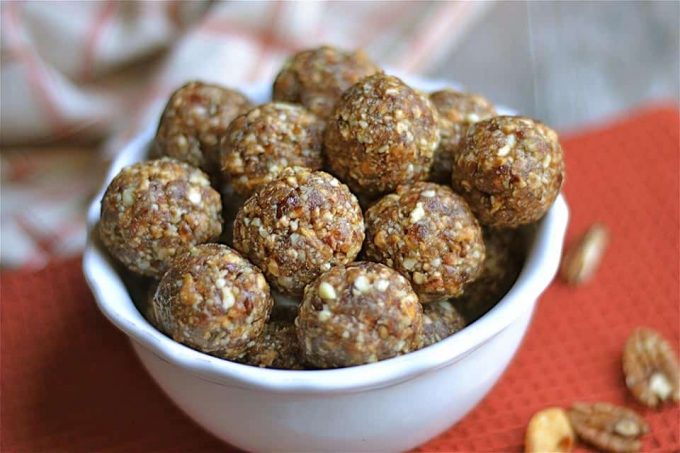
#1. Pecans energy bites
Servings: 10-12
Cooking time: /
Cooking tool: /
Calories: 160
Ingredients: 1 cup pecans
1 cup cried pitted dates
½ unsweetened shredded coconut
Stevia to taste
At home: Chop pecans in a food processor.
Add the dates and ¼ of the shredded coconut.
Make 10-12 balls from the mixture and roll them in the remaining coconut.
Cool them for an hour in the refrigerator and store them in a container.
On the trail: /
Dinner
It’s already dark outside and you’ve walked all day. Don’t make your dinner wait on you – it might get cold!
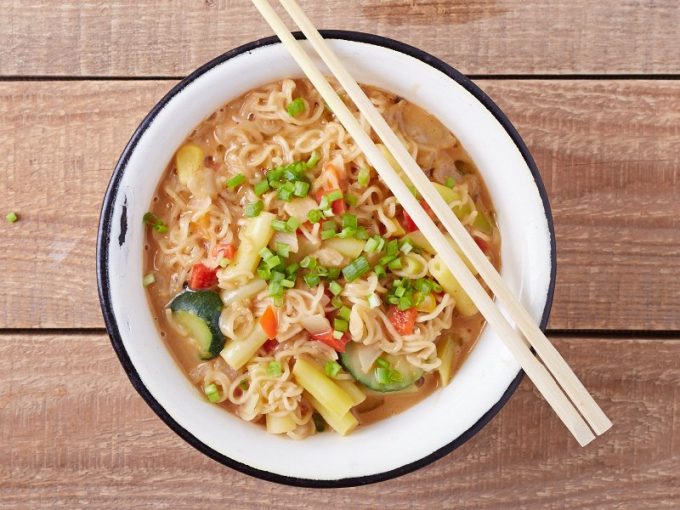
#1. Spicy peanut butter ramen
Servings: 1
Cooking time: 15 min
Cooking tool: one pot
Calories: 450-500
Ingredients: ¼ cup dehydrated frozen vegetable mix
1 block ramen noodles
For the sauce:
1 tablespoon peanut butter
1 tablespoon soy sauce
1 teaspoon rice vinegar
1 teaspoon sriracha sauce
Salt and pepper
1 glove garlic
At home: Mix all of the ingredients for the sauce in a plastic bottle.
Pack the rest of the ingredients separately in a plastic bag.
On the trail: Pour the dehydrated vegetables in a pot with 2/3 cup water.
Stir well and bring to boil for 5-6 min.
Add the ramen and cook for additional 4-5 min.
Stir in the peanut butter sauce.
It’s time to start the trip
Being a vegan and a backpacker in the same time is not an impossible thing to be in the 21st century. As a lot of people opt for healthier and more conscious decisions, stores offer a lot of vegan friendly alternatives, tailored to everybody’s needs. Finding raw and organic products has never been easier.
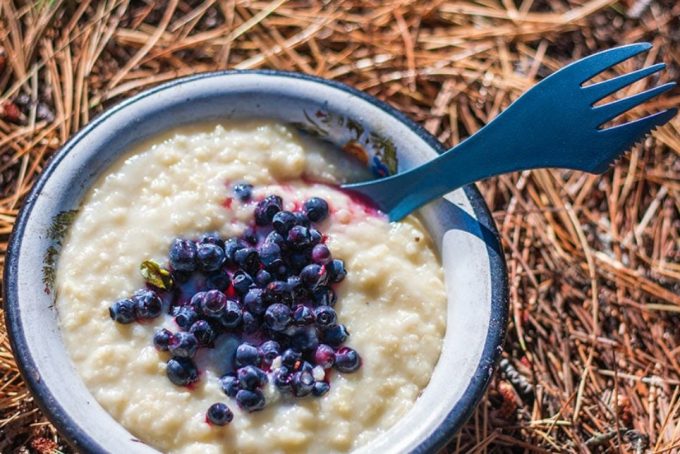
The recipes we shared are quite easy to prepare on the trail with all of the advanced backpacking equipment that is available out there. We recommend a vegan backpacking trip to everyone who is in for an adventure.
After all, we all need a break from the hectic world we live in and there ain’t no better way to energize your body and inner self, than going vegan and sporty for a few days.
So, grab your backpack and pack your favorite vegan and healthy food. Don’t forget to try our recipes and to let us how you liked them. If you have any other suggestions, feel free to share them with us.



